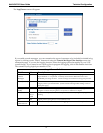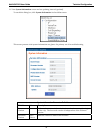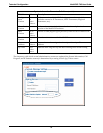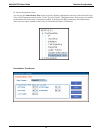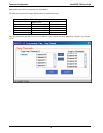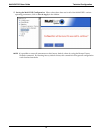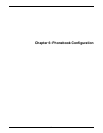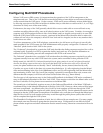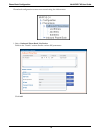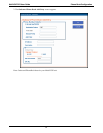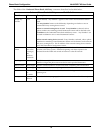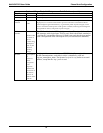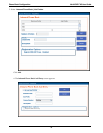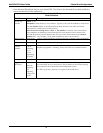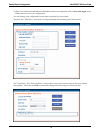
Phone Book Configuration MultiVOIP FXS User Guide
85
Configuring MultiVOIP Phonebooks
When a VoIP serves a PBX system, it’s important that the operation of the VoIP be transparent to the
telephone end user. That is, the VoIP should not entail the dialing of extra digits to reach users elsewhere
on the network that the VoIP serves. On the contrary, VOIP service more commonly reduces dialed digits
by allowing users (served by PBXs in facilities in distant cities) to dial their co-workers with 3-, 4-, or 5-digit
extensions as if they were in the same facility.
Furthermore, the setup of the VoIP generally should allow users to make calls on a non-toll basis to any
numbers accessible without toll by users at all other locations on the VoIP system. Consider, for example, a
company with VOIP-equipped offices in New York, Miami, and Los Angeles, each served by its own PBX.
When the VOIP phone books are set correctly, personnel in the Miami office should be able to make calls
without toll not only to the company’s offices in New York and Los Angeles, but also to any number that’s
local in those two cities.
To achieve transparency of the VoIP telephony system and to give full access to all types of non-toll calls
made possible by the VOIP system, the VoIP administrator must properly configure the “Outbound” and
“Inbound” phone-books of each VoIP in the system.
The “Outbound” phonebook for a particular VoIP unit describes the dialing sequences required for a call to
originate locally (typically in a PBX in a particular facility) and reach any of its possible destinations at
remote VoIP sites, including non-toll calls completed in the PSTN at the remote site.
The “Inbound” phonebook for a particular VoIP unit describes the dialing sequences required for a call to
originate remotely from any other VOIP sites in the system, and to terminate on that particular VOIP.
Briefly stated, the MultiVOIP’s Outbound phonebook lists the phone stations it can call; its Inbound phonebook
describes the dialing sequences that can be used to call that MultiVOIP and how those calls will be directed. (Of
course, the phone numbers are not literally “listed” individually, but are, instead, described by rule.)
Consider two types of calls in the three-city system described above: (1) calls originating from the Miami
office and terminating in the New York (Manhattan) office, and (2) calls originating from the Miami office
and terminating in New York City but off the company’s premises in an adjacent area code, an area code
different than the company’s office but still a local call from that office (e.g., Staten Island).
The first type of call requires an entry in the Outbound PhoneBook of the Miami VOIP and a coordinated
entry in the Inbound phonebook of the New York VOIP. These entries would allow the Miami caller to dial
the New York office as if its phones were extensions on the Miami PBX.
The second type of call similarly requires an entry in the Outbound PhoneBook of the Miami VOIP and a
coordinated entry in the Inbound Phonebook of the New York VOIP. However, these entries will be longer
and more complicated. Any Miami call to New York City local numbers will be sent through the VOIP
system rather than through the regular toll public phone system (PSTN). But the phonebook entries can be
arranged so that the VOIP system is transparent to the Miami user, such that even though that Miami user
dials the New York City local number just as they would through the public phone system, that call will
still be completed through the VOIP system.
This PhoneBook Configuration procedure is brief, but it is followed by an example case. For many people,
the example case may be easier to grasp than the procedure steps. Configuration is not difficult, but all
phone number sequences and other information must be entered exactly; otherwise connections will not be
made.



